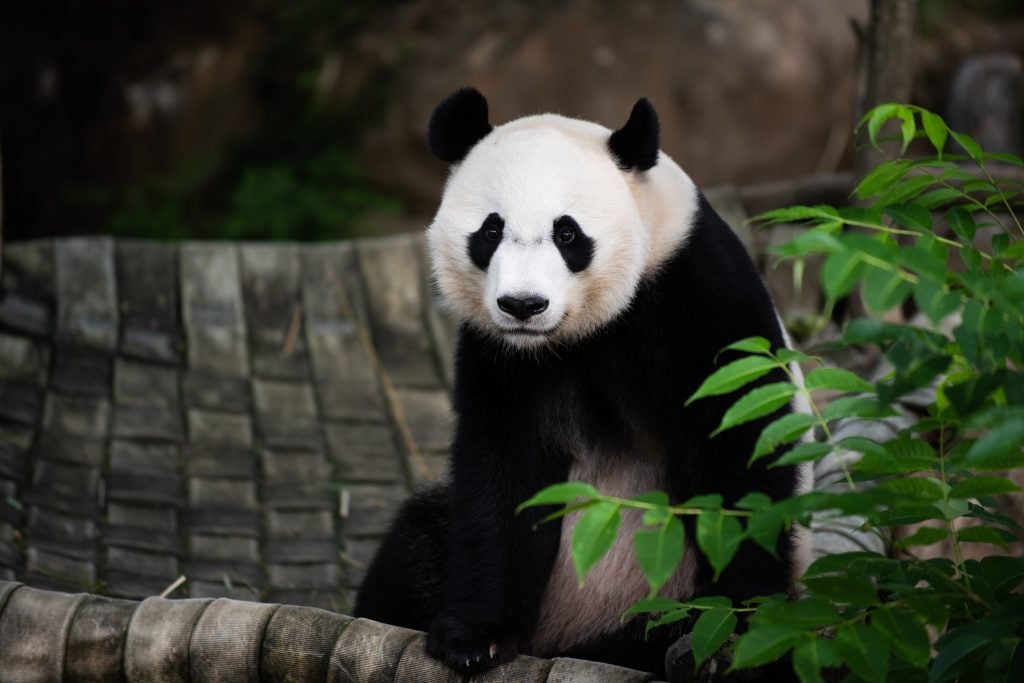Washington, DC, said goodbye to some of its most famous animal residents. The National Zoo returned its three giant pandas to China in advance of an expiring loan agreement between the U.S. and China.
The departure comes amid intensifying relations between Washington and Beijing over security, economic and humanitarian issues.
The pandas’ departure from DC leaves Zoo Atlanta as the last home for the bears in the United States, with those pandas expected to return to China in 2024.
“The reason for the deal’s expiration is not a single isolated event or condition not being met. It reflects the more general sentiment of the Chinese government toward another country,” said Amb. Barbara K. Bodine, Distinguished Professor in the Practice of Diplomacy and director of Georgetown’s Institute for the Study of Diplomacy.
A former U.S. ambassador, Bodine explains the history of panda diplomacy, whether the pandas could be used as a bargaining chip when President Joe Biden meets with President Xi Jinping and the surprising ways other countries have used black labs, koalas and other animals as diplomatic tools
The pandas arrived at the National Zoo in 1972 as a gift from China’s Premier Zhou Enlai after President Nixon’s trip to China. What did this gift symbolize? What impact did it have?
The first two pandas – Ling Ling and Xing Xing – symbolized something we all celebrated at the time: China’s “reform and opening up” to the Western world as Mao’s cultural revolution came to an end. Symbolism is a central part of Chinese culture and diplomacy. The pandas were the first sign, strategically placed in the nation’s capital, that the exchange of ideas, people and culture would begin between China and the United States. They symbolized a “New China” that would act cordially on the world stage, mirrored by popular perceptions of pandas as cute and cuddly.
Why are pandas so coveted by other countries? Can other countries just breed the pandas China loans to them?
Pandas in and of themselves are not coveted; what is coveted is the expression of good standing from the Chinese government reflected by the gifting of pandas. They are often referred to as a “seal,” agreed to once China turns a corner with a country, be it in diplomatic, trade or security matters. This was especially important during the early phases of China’s opening up when countries were interested in certainty amid this new phase of Chinese communism. Pandas really did make a difference, but primarily as a symbolic tool.
Sadly, the agreements have come with the stipulation that all pandas bred are citizens of China, and cubs must be returned to China by their fourth birthday.
Why did China choose pandas as a diplomatic tool? How does “panda diplomacy” benefit China?
The only natural habitat for giant pandas in the world is located in southwestern China. Combined with the requirement that all cubs must return to China this creates the sense that pandas belong in and to China, and a country can only receive them if they have good relations with the People’s Republic.
It arguably benefits China as a tool of public diplomacy. It is quite difficult for a government to speak directly to the public of another country, especially if it wants to impact public perceptions of itself. Pandas are a fairly effective tool to accomplish this given how much they appeal to animal lovers. With their departure, there are probably a few upset kids right now. How many other countries can say they have the means to directly affect people’s daily lives with such a well-known symbol?

Has China used pandas as an instrument of diplomacy with other countries? Do they continue to do so?
Absolutely. China has around 20 loan agreements active right now, with the tradition dating back at least a thousand years in less formalized terms. 1972 was not even the first time pandas came to the United States. In 1941, Chiang Kai-Shek gifted pandas to the United States to thank us for assisting Chinese refugees during the country’s war with Japan.
What do you think this signals, particularly as Britain will also be returning its pandas in December, and Australia may next year too?
The ongoing panda deals are usually three-to-10-year leases, which reflects their purpose as a tool of symbolic diplomacy. It’s very important here to distinguish between symbolism and bargaining. No government — at least no sane government — would trade foreign policy interests for pandas. But they are an inducement tool to encourage negotiations in whatever issue area concerns China at the time.
However, it is possible the lack of renewal reflects the tense state of relations between China and the West: you have trade and export controls, tensions over Taiwan, the South China Sea, emissions commitments and the list goes on. Pandas have been recalled before – usually under the pretext of animal welfare and conservation – conveniently when that country has offended China in some way.
President Biden is planning on meeting Xi Jinping this month. Could the pandas be used as a bargaining chip?
I can say with confidence that they will not be a bargaining chip. But they may well reflect the outcome of any meeting that takes place. If it goes extraordinarily well, we could see the pandas return to the National Zoo. If we do, it will be a “seal” that goes on top of any deal, rather than a bargaining chip. Sadly, it is unlikely that pandas will be returning in the foreseeable future. Given that scheduling a meeting between the two leaders is proving difficult, an outcome good enough to induce the pandas’ return is quite unlikely at this stage.
Is animal diplomacy a common practice in other countries?
Many countries use it, though it has been most popular in East Asian countries and cultures going back centuries as part of China’s tribute system. Sri Lanka and Vietnam have gifted elephants to many countries, and the Indonesian president gifted Komodo dragons to George H.W. Bush in 1990. Australia has a lot of animals to work with and has given various marsupials, platypuses and crocodiles to friends and allies over the last two decades. You can imagine the photo-ops, news clippings and headlines coming out of these sorts of summits. It’s public diplomacy 101, and animals can be a great way of achieving it.
There have been rare instances of a darker side to animal diplomacy. President Vladimir Putin famously brought a dog into a meeting with former German Chancellor Angela Merkel in 2016. It was well-known that Merkel is afraid of dogs, particularly large ones, and the appearance of Putin’s black lab Koni was likely on purpose. The viral picture shows a nervous Merkel and a smirking Putin. Thankfully, these sorts of episodes are few and far between.
The phrase “white elephant” actually comes from animal diplomacy. The legend goes that kings of Siam — now Thailand — would gift sacred white elephants to those who displeased them, with the intention that the cost of upkeep and housing would financially cripple the recipient. President Lincoln tactfully declined his gift of a white elephant from Thailand, stating he could not receive gifts from foreign governments.
How can animal diplomacy be effective?
Animal diplomacy — and soft power more broadly — are an enigmatic aspect of diplomacy, and are part of what makes it such a fascinating field. Diplomacy is about people and relationship-building. To the extent that the arrival of exotic or beautiful animals can impact people’s perception of the gifting country, animal diplomacy certainly is effective.
I cannot say for sure that China’s ability to conduct diplomacy is helped by the existence of panda loan agreements, but people in the United States, and particularly the DC area, are saddened by the pandas’ departure. Will that sadness translate into a change in U.S. policy? No. But does it put China and its concerns into the minds of DC’s residents? Yes. At the edges, when diplomacy involves personalities with all their flaws and foibles, that could make a difference.
Source : Georgetown University










